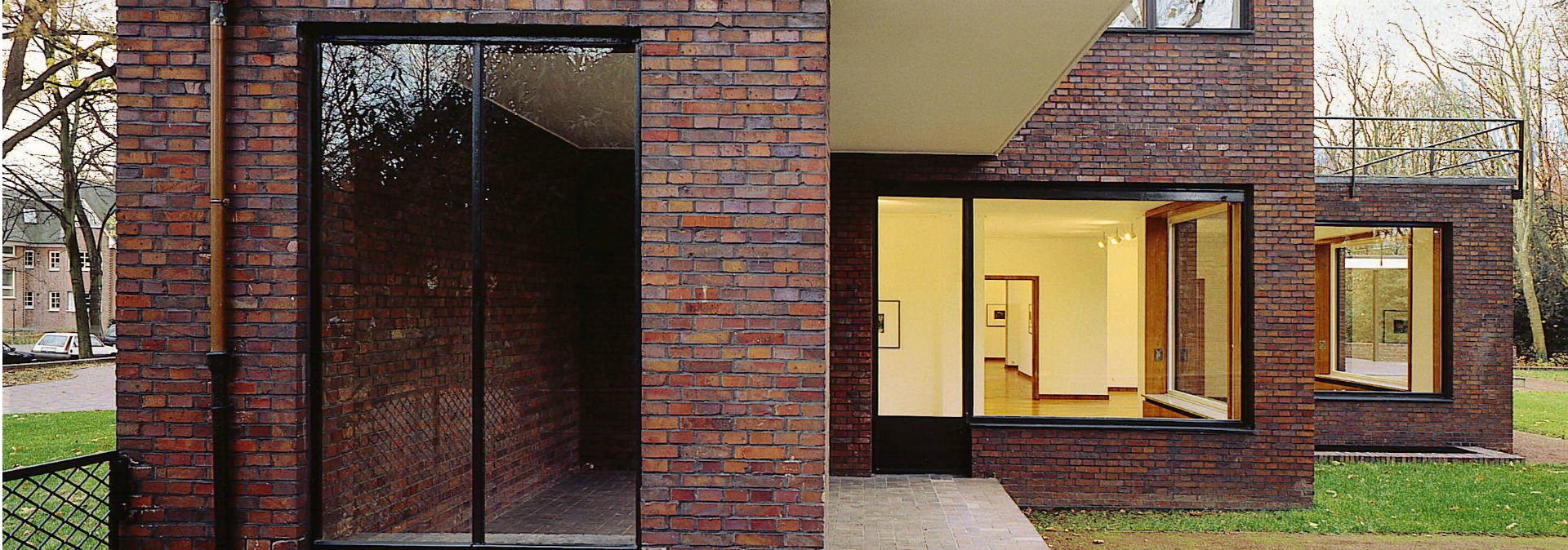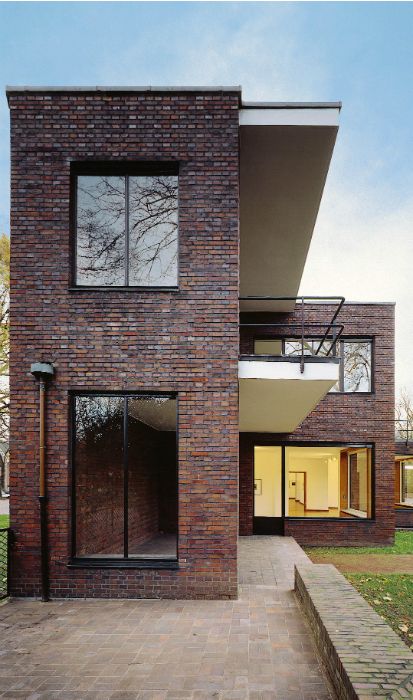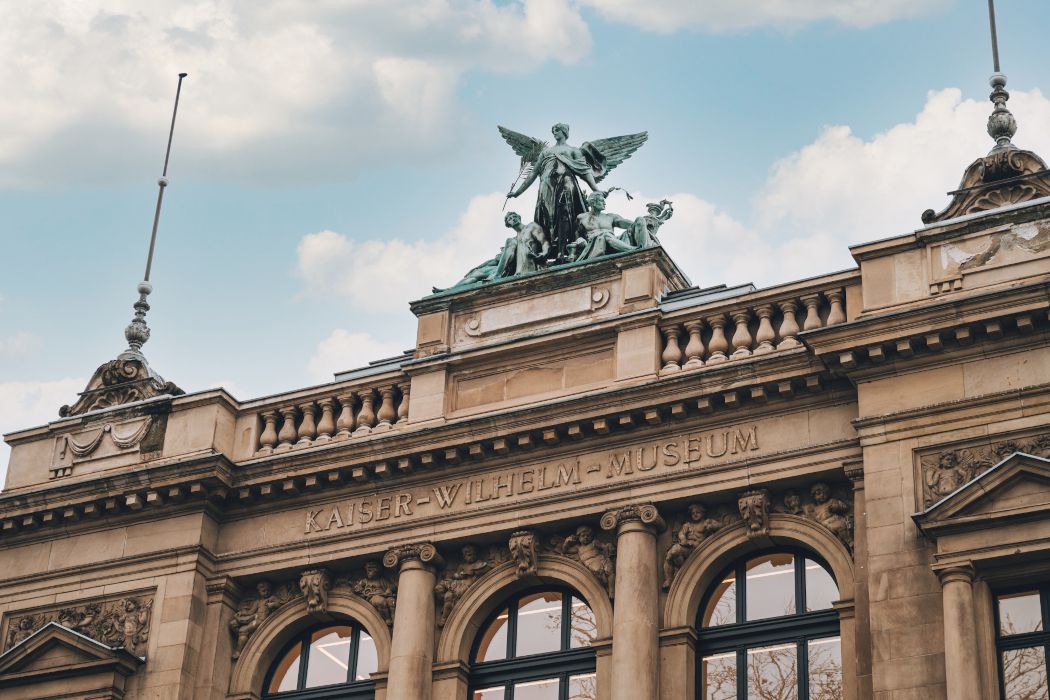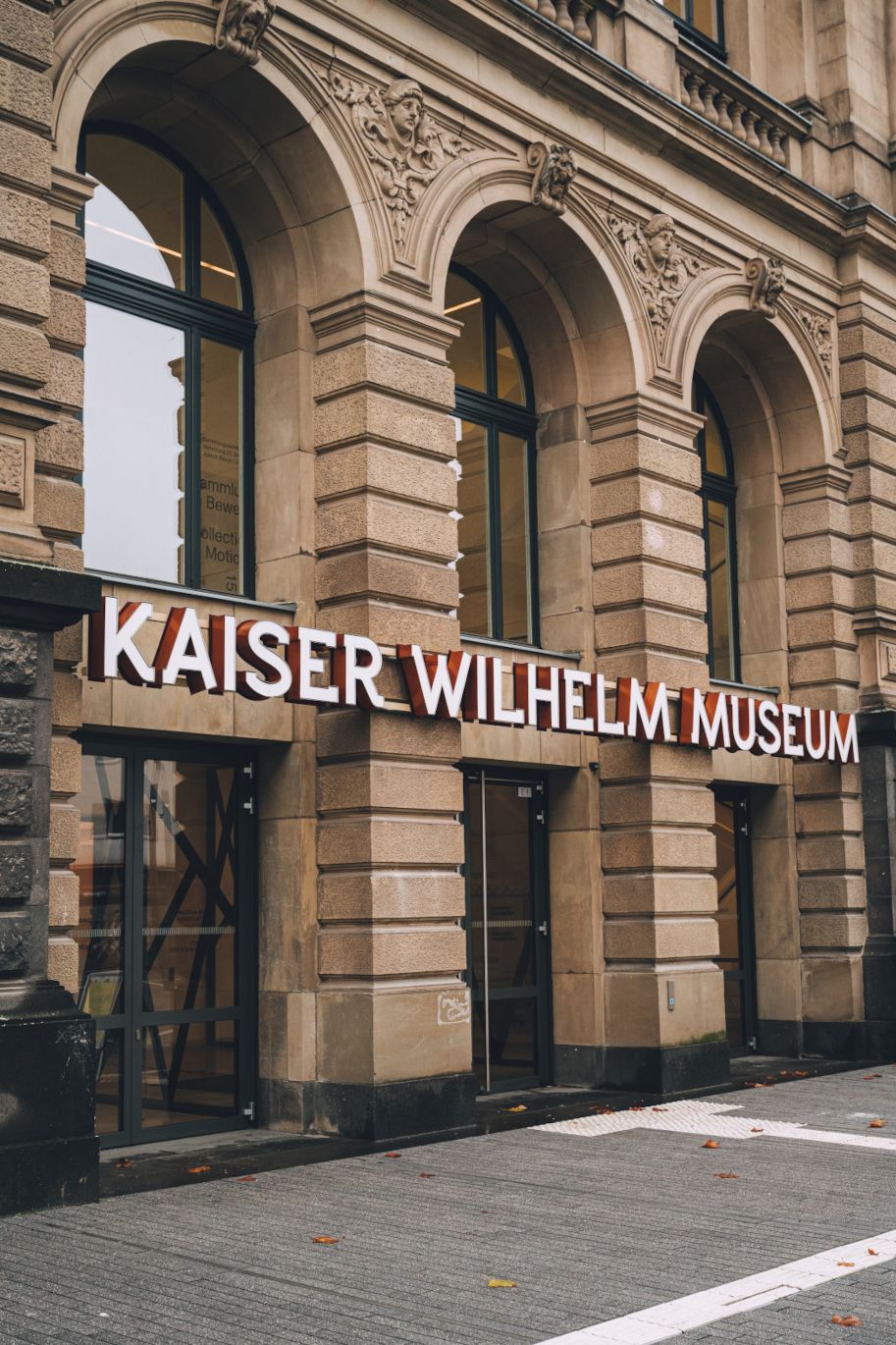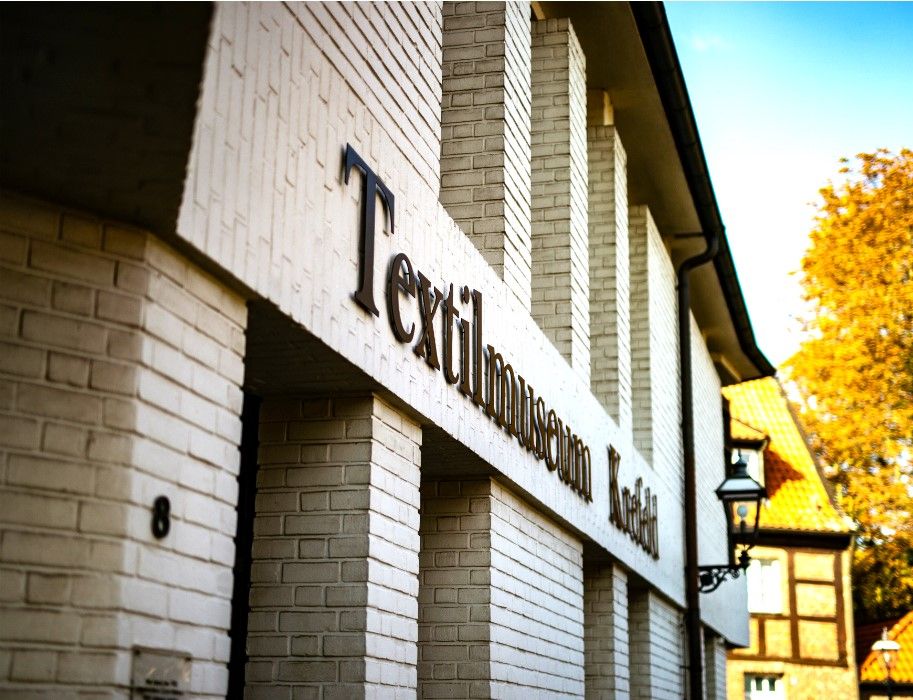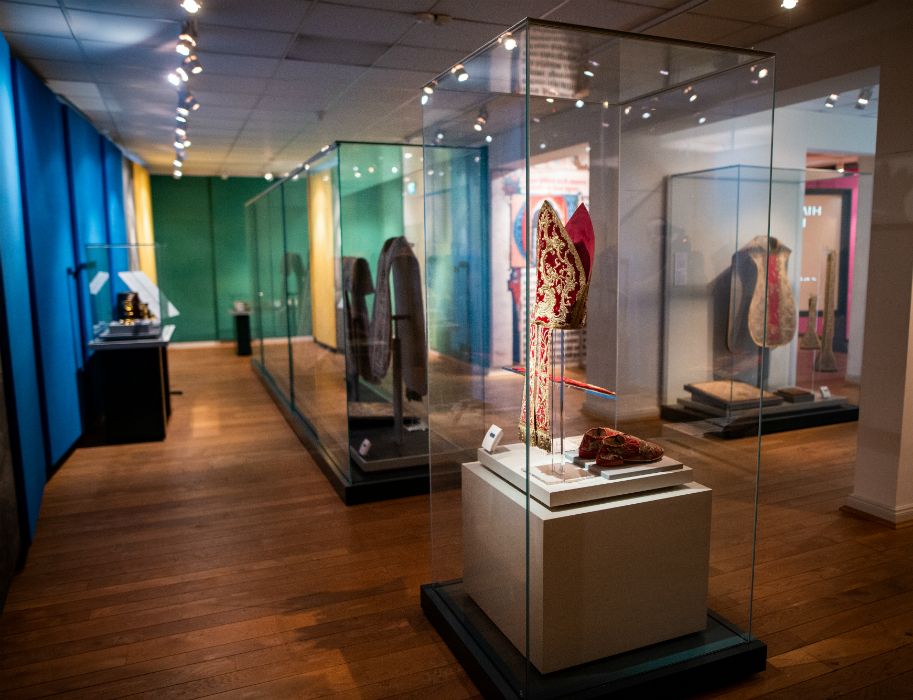In Krefeld on the Lower Rhine, art not only takes place in the museums, the buildings themselves are also part of art history - and could hardly be more different. Here the Kaiser Wilhelm Museum, a magnificent building from the end of the 19th century, there the Haus Lange and Haus Esters museums, two functional villas originally built as private homes in the Bauhaus era of the 1920s. Three exciting locations for contemporary fine and applied arts with a focus on the 20th and 21st centuries, which together form the Kunstmuseen Krefeld (Krefeld Art Museums), inspired by the palace architecture of the Italian Renaissance when a building was erected in Krefeld at the end of the 1890s in honor of Kaiser Wilhelm I, which was to be a monument, art and applied arts museum at the same time. At the time, a marble statue of the emperor welcomed visitors who entered the building via an open staircase. Although the staircase fell victim to renovation work in the 1960s, the façade of the Wilhelminian style building has otherwise been preserved.
Classical modernism to minimal art
Behind it, modern exhibition rooms open up today, in which the Kunstmuseen Krefeld present parts of their extensive collection with important works of classical modernism, pop and minimal art through to important positions in contemporary art since the 1980s, as well as applied art and design in changing exhibitions. Since the reopening of the Kaiser Wilhelm Museum in summer 2016, the mural "The Ages of Life" by Johan Thorn Prikker (1868-1932) can be admired again for the first time in forty years. The cycle of life, which the Dutch painter created in the museum in 1923 using the secco technique, was uncovered as part of an extensive renovation of the building.
With the Lange and Esters houses, the Kunstmuseen Krefeld received two exhibition venues in 1955 and 1981, which are also among the most important icons of New Building architecture of the 1920s. It is none other than Ludwig Mies van der Rohe who is responsible for the rational, compact design of the villa ensemble. Originally built as residences for the families of textile entrepreneurs Hermann Lange and Dr. Josef Esters, the strictly rectangular houses are similar but not identical in construction, which provides architecture enthusiasts with extremely interesting opportunities to compare the houses.
While the dark brick façades may initially appear rather closed or discreet, the impression inside is dominated by the openness of the rooms and their transparency towards the garden. Large windows provide a view of the spacious gardens, which were also designed by Mies van der Rohe. Sculptures by renowned artists such as Ulrich Rückriem, Richard Serra, Claes Oldenburg and Michael Craig Martin round off the picture.
